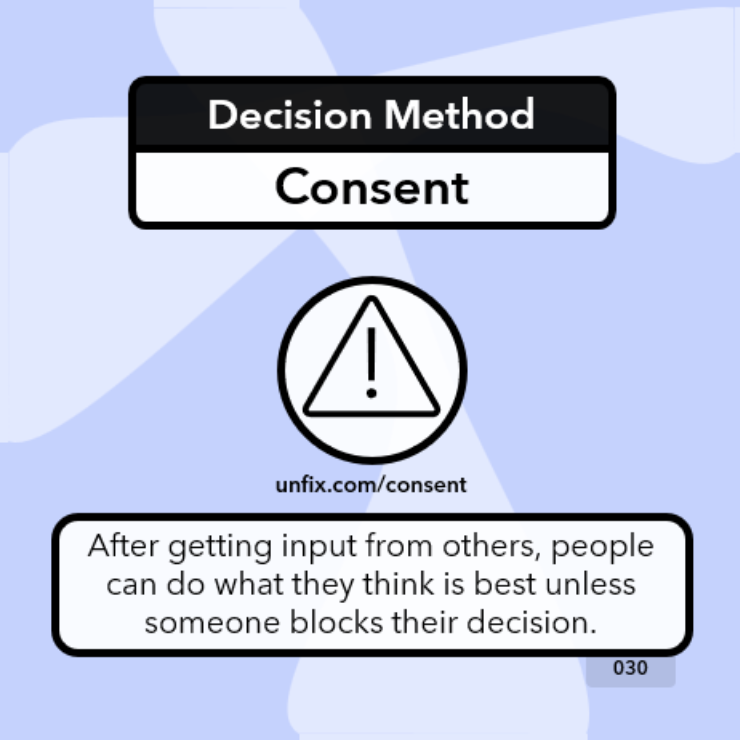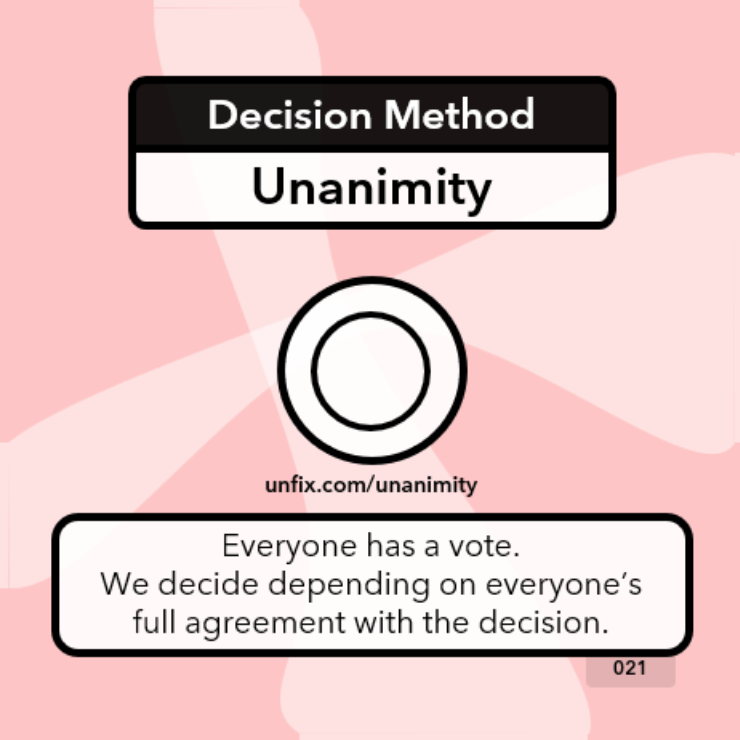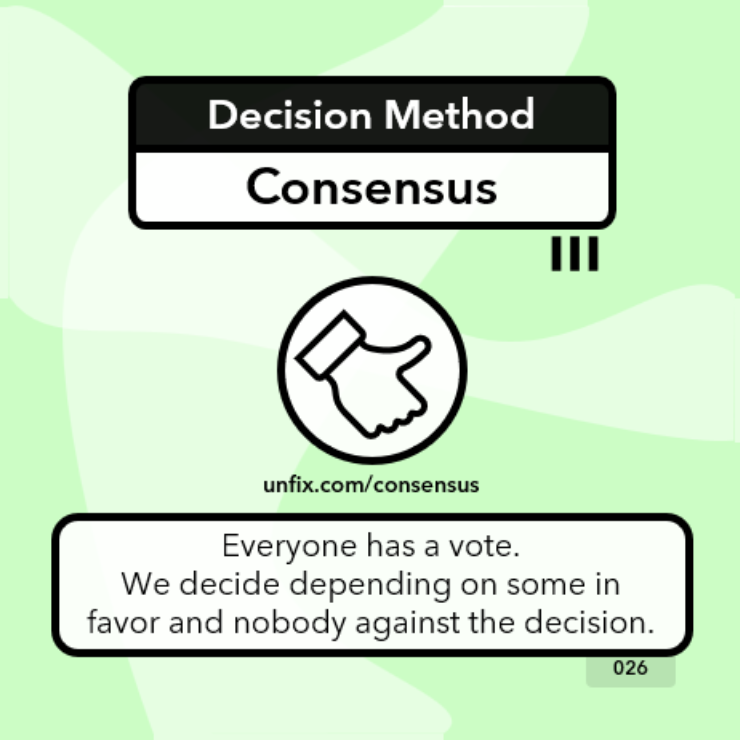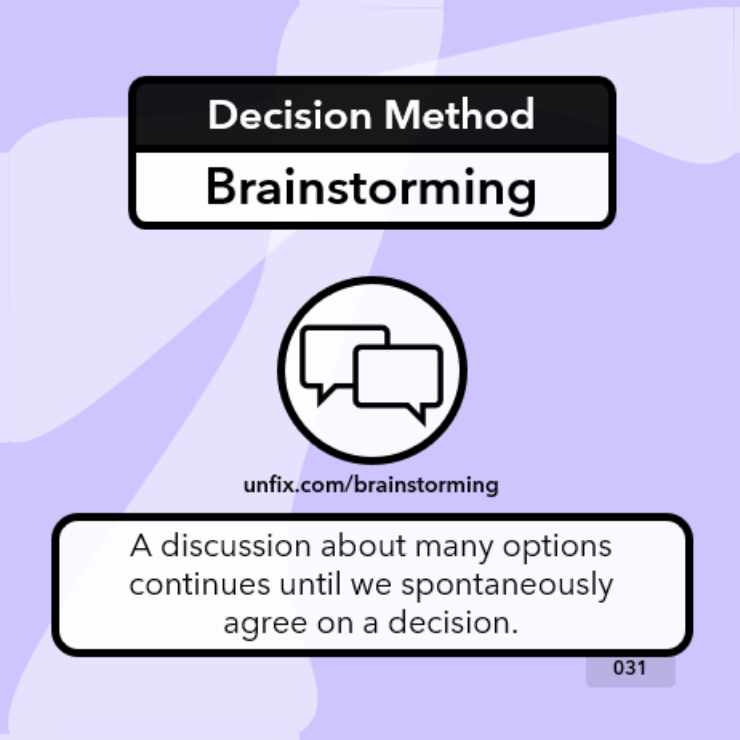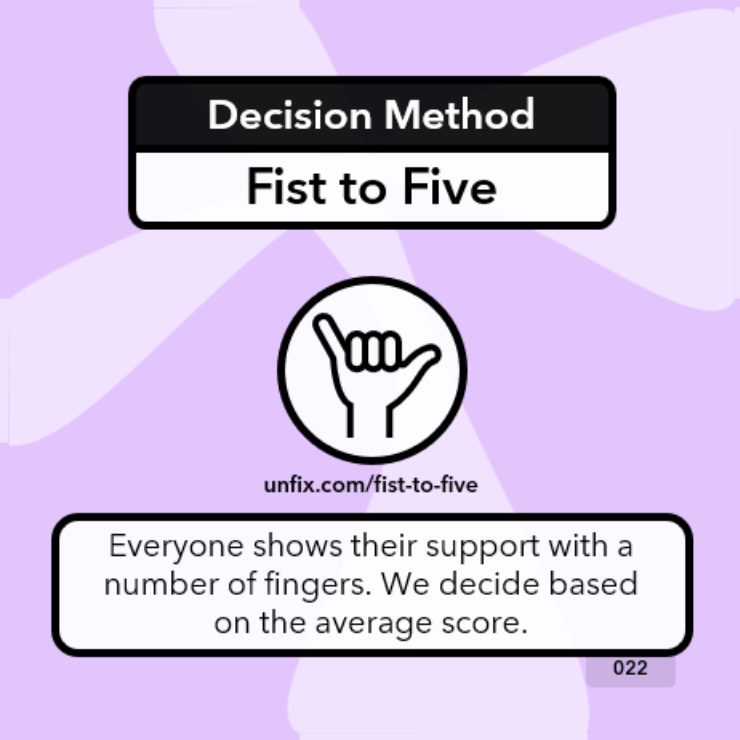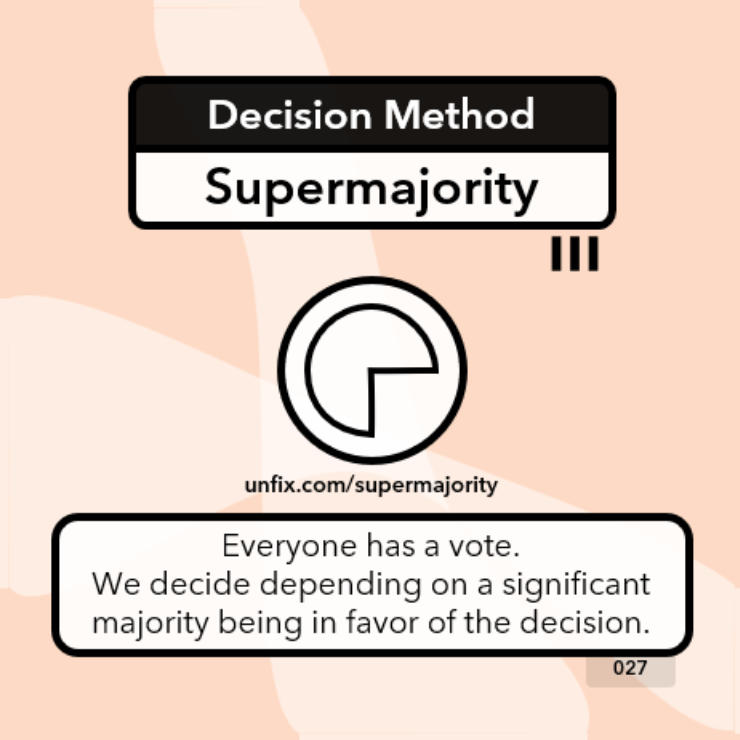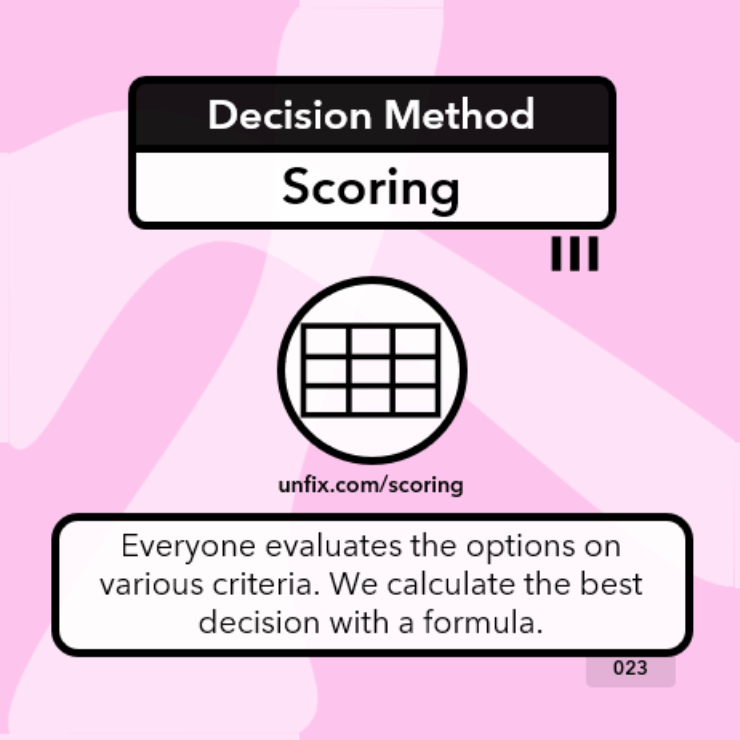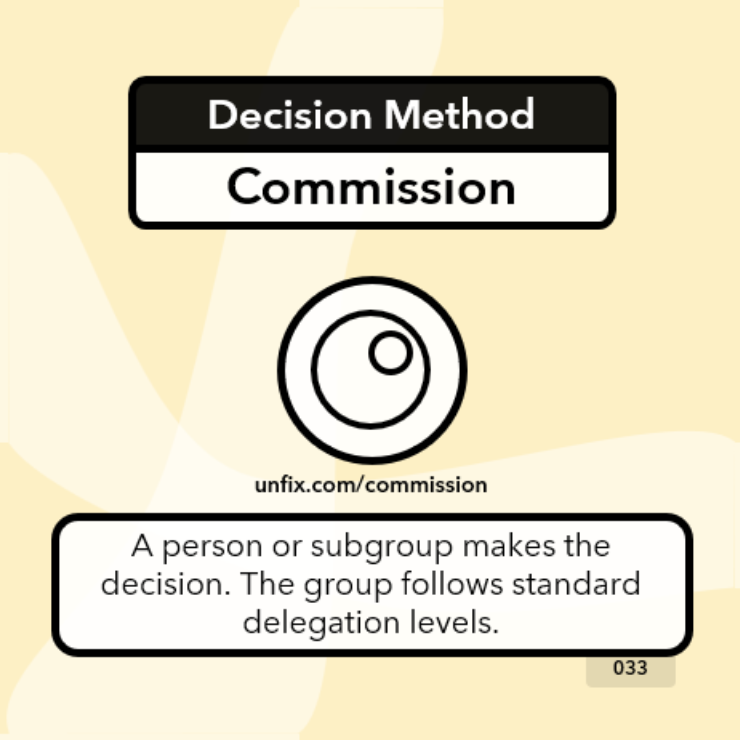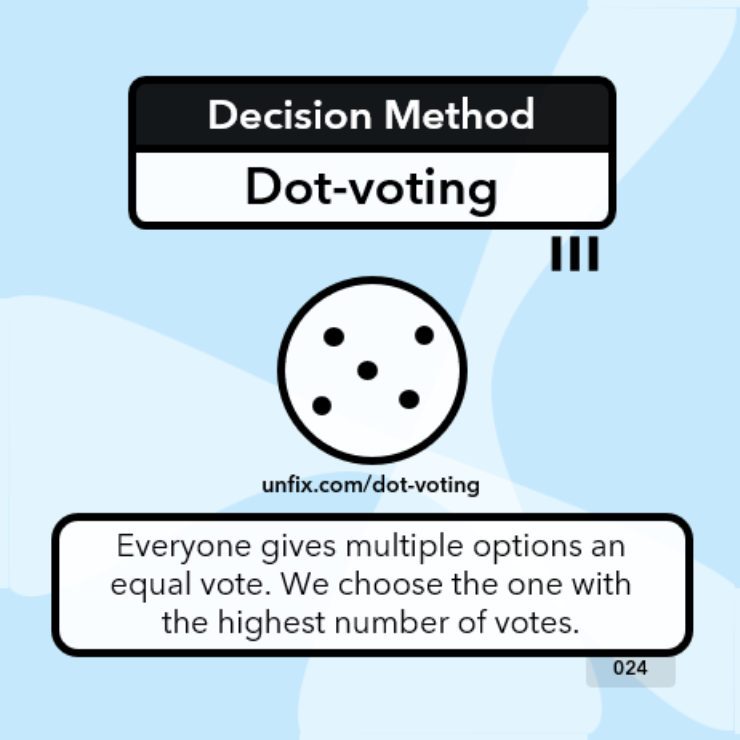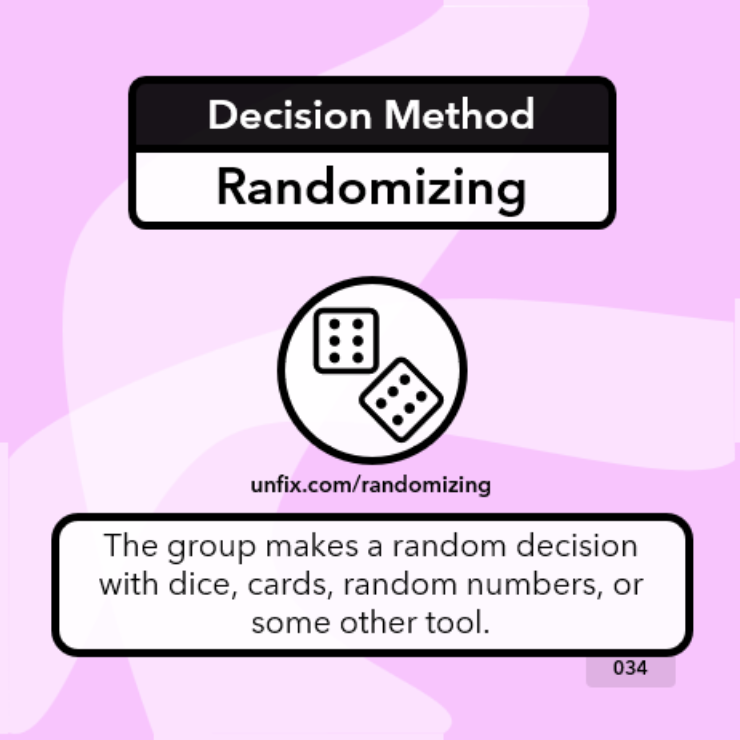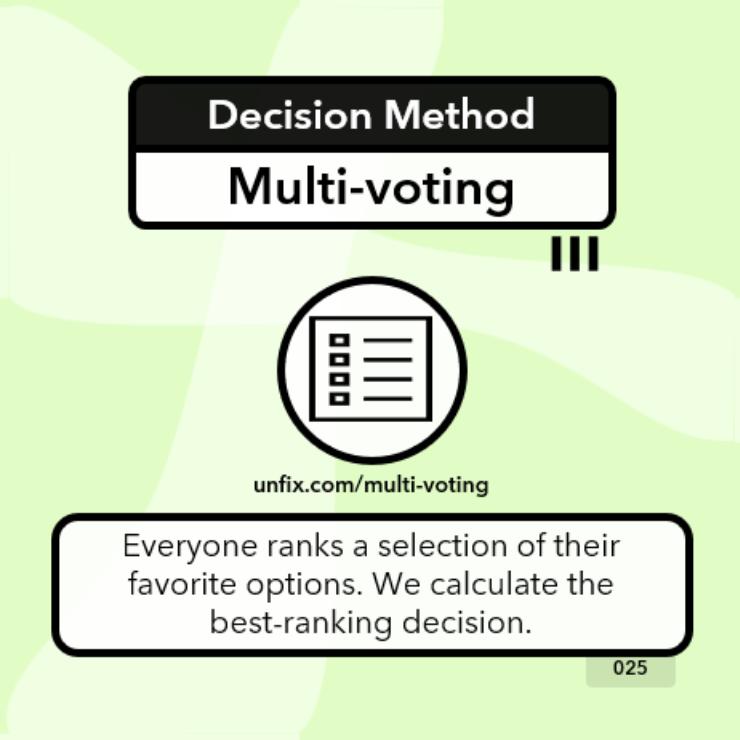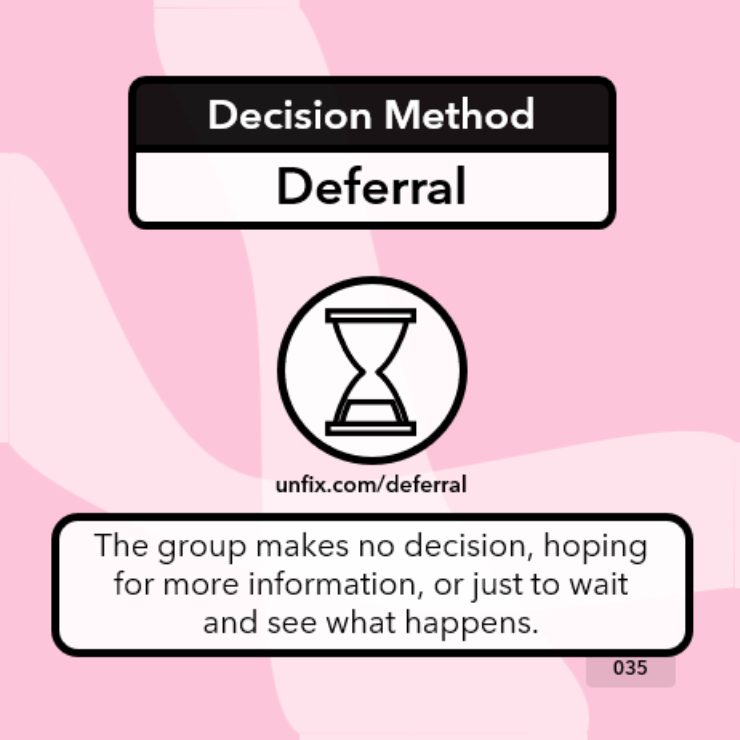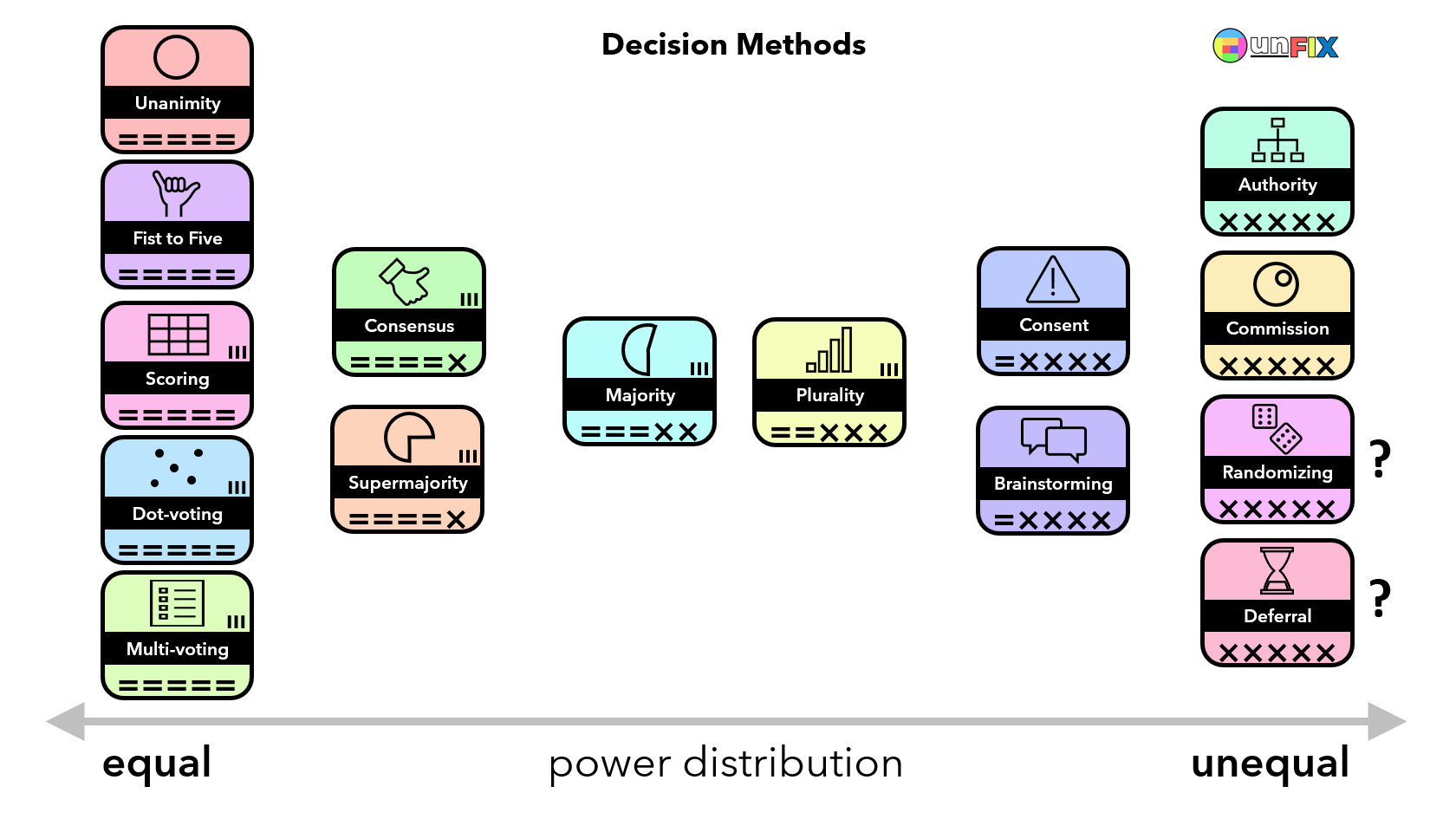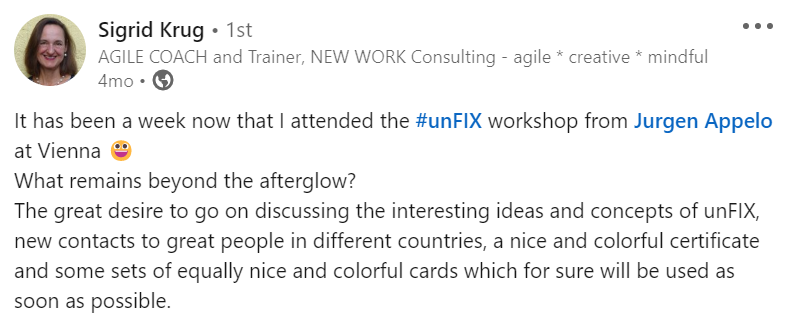
Consent
Decision Method
Consent (Disagree & Commit) is about getting input from others, and after that, people can do as they want unless someone blocks their decision (no one voted "heavens no").
Decision Methods: Unanimity • Fist to Five • Scoring • Dot-Voting • Multi-Voting • Consensus • Supermajority • Majority • Plurality • Consent • Brainstorming • Authority • Commission • Randomizing • Deferral
Purpose
Consent-based decision-making (also called "Disagree and Commit") is a collaborative approach that prioritizes the inclusion of all group members in the decision-making process. Instead of seeking unanimous agreement, this method focuses on ensuring there are no fundamental objections to a proposed decision. Everyone is encouraged to provide input, voice concerns, and discuss potential solutions. After gathering and considering all perspectives, the decision can proceed unless someone has a compelling reason to block it, often symbolized by a veto (or "heavens no" vote). This method ensures that while not everyone may be in agreement, the decisions made are still broadly acceptable and won't harm or adversely affect any group member. It balances efficiency with inclusivity, fostering collective commitment.
Notes
Consent-based decision-making promotes a culture of trust, collaboration, and accountability, allowing groups to move forward while ensuring that the concerns and perspectives of all participants are taken into account.
Consent differs from Unanimity and Consensus.
Unanimity = everyone says Yes or Hell, Yes.
Rules / Constraints
We have not yet defined rules or constraints for this decision method.


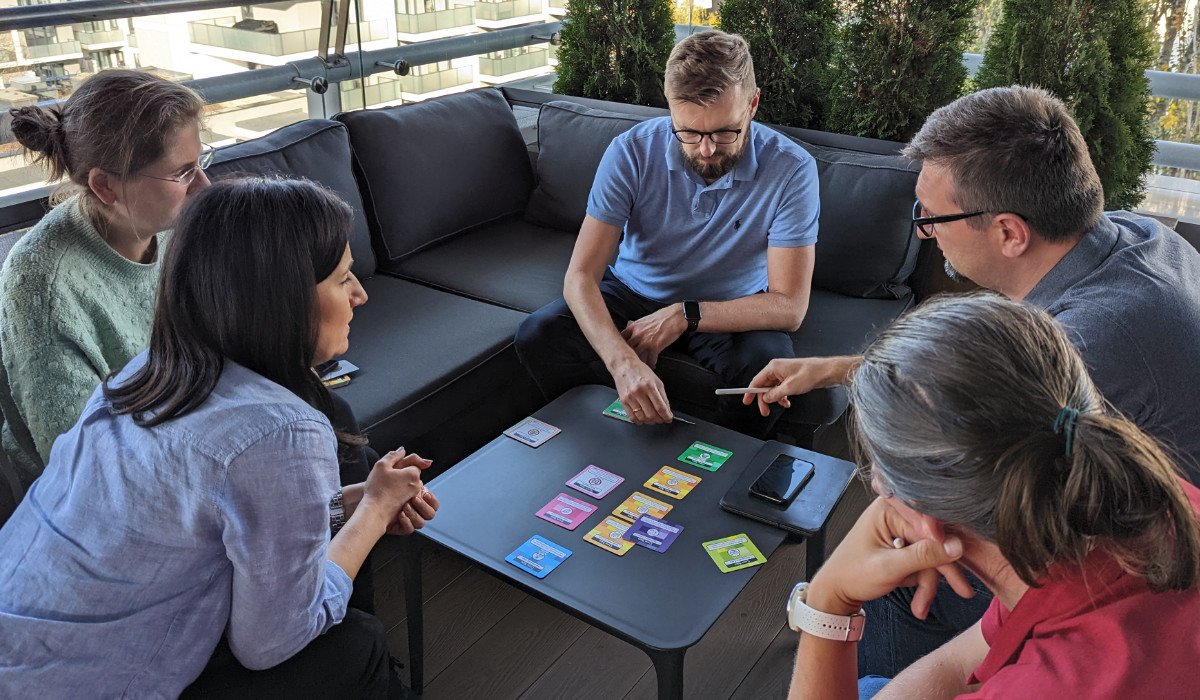

“Sometimes you make the right decision, sometimes you make the decision right.”
(Source: Phil McGraw)

